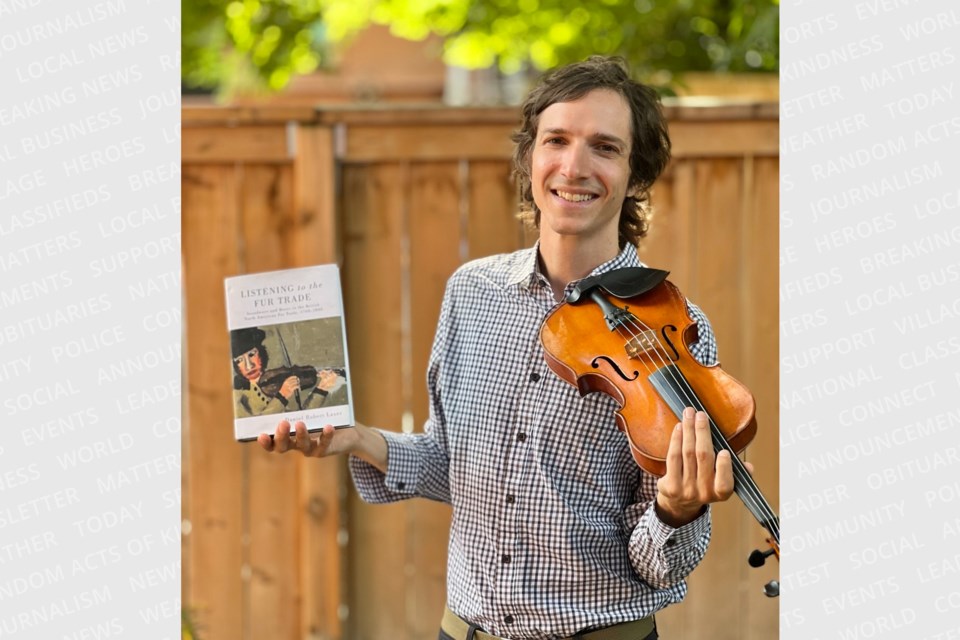Historian and musician Dr. Daniel Laxer will be making a visit to Algoma University this week for his presentation entitled, Listening to the Fur Trade.
Based on his book of the same name, Laxer explores the key role that music played in the British North American fur trade.
“There’s a remarkable story there that just hadn’t been told,” he says.
His work started as an undergrad at the University of Alberta where he studied music and history. Through achieving a master’s degree and eventually a PhD, he wanted to identify the role music had in our early history – even before Canada was a country.
His findings from the fur trade era surprised him.
“When I started researching this topic, I didn’t know what I was going to find,” he says. “So much of what I discovered really surprised me. From firearms used as sound-making signalling devices, to Indigenous music and dance being described at length by fur traders in ways I never could have imagined.”
Laxer describes the exchange of music at that time as pivotal in relationship building among Indigenous and non-Indigenous peoples.
“It was a real trust building activity,” he says. “Sharing music, sharing dance – this often happened right before or after the trade. It was a major piece of Canadian history that had hardly been studied.”
To better understand what he was examining, Laxer picked up the fiddle and learned how to play it from scratch. A close relative of the violin, the fiddle was a well-liked choice of instrument and played a lead role in the exchange of sounds during the fur trade.
“It was not an easy instrument to learn,” Laxer says. “It took years of sounding terrible. It’s a remarkable instrument in the sense that it was so universally appreciated 200 years ago by all the people in what is now Canada, from Scottish to French-Canadian to Indigenous. There’s a real appreciation for it. The more time I put into learning it, the more rewarding it was.”
As part of his presentation, Laxer plays the fiddle to give his audience a real-life experience of what traders would have heard back then.
“I didn’t want to just teach this history, I wanted to show it,” he says.
From the mid-1600s to the 1800s, the Sault was one of the most important sites in the fur trade industry along the Great Lakes, so coming to Algoma U to host a presentation was a priority for Laxer.
He says the fur trade is described by scholars as the time of the best relationship between Indigenous people and Europeans in what is now Canada, where songs and melodies were shared through both sides of the trade.
“The main takeaway is that music can be a really powerful source of cooperation, especially when it comes to reconciliation with First Nations and Indigenous peoples,” he says. “I think it’s important for Canadians to realize there was a time when we got along better, when Indigenous and non-Indigenous people were able to trade, and there was this remarkable exchange of culture.”
Laxer’s presentation will take place on Thursday, Sept. 15 at 7 p.m. in the Doc Brown Lounge at Algoma U. The event is free and open to everyone.
